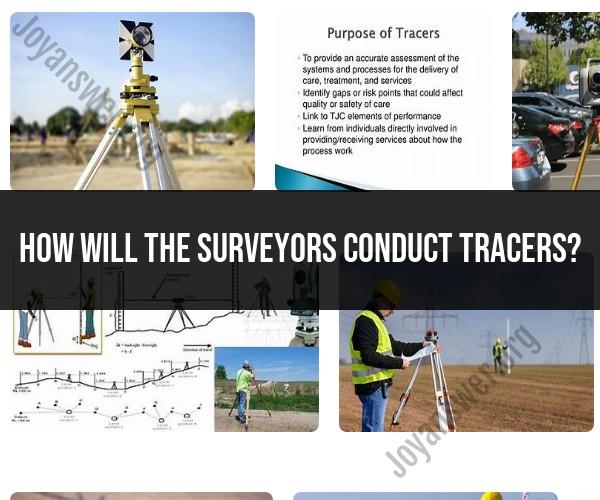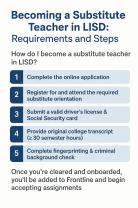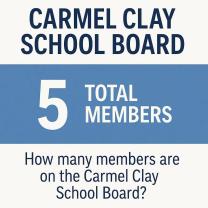How will the Surveyors conduct tracers?
In surveying, tracers are used to locate or verify the position of property boundaries, land features, or reference points. The process of conducting tracers involves the use of various surveying instruments and techniques to establish or confirm these positions accurately. Here's an overview of how surveyors typically conduct tracers:
Research and Documentation:
- Surveyors begin by thoroughly researching historical records, property deeds, plats, and any available documentation related to the area they are surveying. This information can provide valuable insights into the property boundaries and reference points.
Field Survey Preparation:
- Before heading to the field, surveyors gather the necessary equipment and tools, including surveying instruments like total stations, GPS receivers, theodolites, levels, and measuring tapes.
Field Surveying:
- Surveyors head to the field to conduct the tracer survey. The specific procedures may vary depending on the purpose of the survey, but here are some common techniques and steps:
a. Setting Up Control Points: Surveyors establish control points with known coordinates as a reference for the survey. These points may be previously surveyed monuments or benchmarks.
b. Use of Surveying Instruments: Depending on the accuracy requirements and the nature of the survey, surveyors use instruments like total stations, GPS receivers, or theodolites to measure angles, distances, and elevations.
c. Traversing: In boundary surveys, surveyors often use traversing techniques to connect control points and establish new reference points along property boundaries.
d. Topographic Survey: For land development projects or mapping purposes, topographic surveys may be conducted to record the elevations and features of the land.
e. Record Field Notes: Surveyors maintain detailed field notes documenting all measurements, observations, and any other relevant information during the survey.
f. Monumentation: In some cases, surveyors may install new survey monuments or markers to indicate property boundaries or key reference points.
Data Processing:
- After collecting field data, surveyors process the measurements and observations to calculate coordinates, distances, and elevations. This data is used to create survey maps and reports.
Map and Report Generation:
- Surveyors create survey maps and reports that provide a visual representation of the surveyed area. These documents typically include boundary lines, reference points, elevations, and other relevant information.
Quality Control:
- Surveyors review and validate the accuracy of their survey data and calculations to ensure the results meet the required standards and accuracy levels.
Client Consultation: Surveyors often consult with their clients to review the survey results and address any questions or concerns.
Filing and Recordation: Depending on the purpose of the survey, the final survey documents may be filed with local authorities, such as county or city offices, to update property records or resolve boundary disputes.
Documentation Preservation: Surveyors keep records of their surveys and field notes for a specified period as required by professional and legal standards.
It's important to note that the specific procedures and techniques used in conducting tracers can vary depending on the type of survey (e.g., boundary survey, topographic survey, construction survey) and the local regulations and standards governing surveying practices. Surveyors must adhere to these standards to ensure the accuracy and reliability of their work.
Surveyor's Techniques: Conducting Tracers for Accurate Measurements
Tracers are a surveying technique used to measure distances accurately. Tracers involve setting up a series of stations along a line and measuring the distances between the stations using a variety of methods, such as electronic distance meters, total stations, and chains.
To conduct a tracer, surveyors will typically follow these steps:
- Identify the starting and ending points of the line to be measured.
- Set up a series of stations along the line. The stations should be spaced close enough together to ensure that the line is accurately measured, but not so close together that they are difficult to set up and measure.
- Measure the distances between the stations using a variety of methods. The method used will depend on the accuracy required and the equipment available.
- Calculate the total length of the line by adding up the distances between the stations.
Here are some tips for conducting tracers for accurate measurements:
- Use high-quality equipment. The accuracy of your measurements will depend on the quality of your equipment. Make sure to use well-maintained equipment that is calibrated regularly.
- Be careful when setting up your stations. Make sure that your stations are set up on stable ground and that they are clearly marked.
- Take multiple measurements. To ensure accuracy, take multiple measurements of each distance.
- Calculate your results carefully. Once you have taken your measurements, calculate your results carefully. Be sure to use the correct formulas and to include all of the necessary data.
Navigating Surveying: The Art of Conducting Tracers
Conducting tracers is a skilled task that requires knowledge of surveying techniques and equipment. Surveyors must be able to accurately measure distances and calculate results. They must also be able to navigate the landscape and identify suitable locations for their stations.
Tracers are used in a variety of surveying applications, such as:
- Boundary surveys: Tracers are used to measure the boundaries of properties and other land parcels.
- Construction surveys: Tracers are used to measure distances for construction projects, such as roads, bridges, and buildings.
- Topographic surveys: Tracers are used to create maps that show the contours of the land.
Precision in Surveying: Tracer Activity for Measuring Distances
Tracers are an essential tool for surveyors who need to measure distances accurately. By following the tips above, surveyors can ensure that their measurements are precise and reliable.
Here is an example of how tracers are used in a surveying activity:
A surveyor is hired to measure the distance between two points on a proposed road. The surveyor sets up a series of stations along the line of the road using a total station. The surveyor then measures the distances between the stations using the total station. Once the surveyor has measured all of the distances, they calculate the total length of the road by adding up the distances between the stations.
The surveyor's measurements are accurate to within a few centimeters. This accuracy is important because it ensures that the road is built in the correct location.
Tracers are a valuable tool for surveyors who need to measure distances accurately. By following the tips above, surveyors can ensure that their measurements are precise and reliable.













